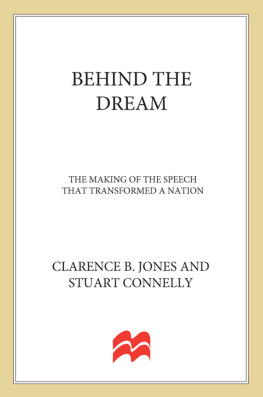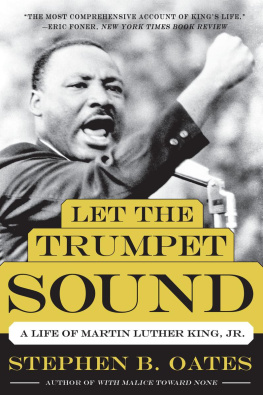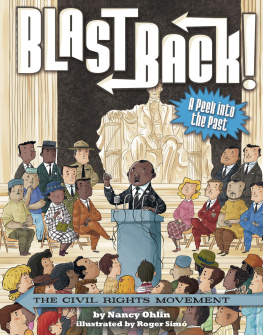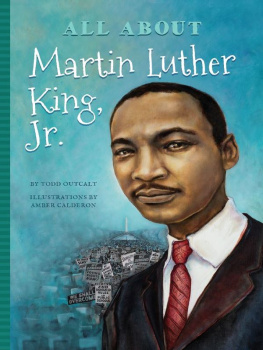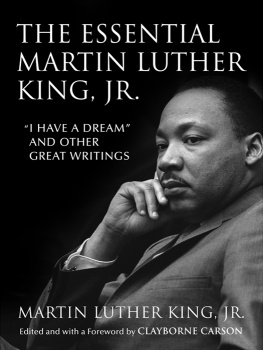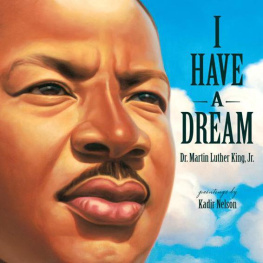B EHIND
THE
DREAM
B EHIND
THE
DREAM
THE MAKING OF
THE SPEECH
THAT TRANSFORMED
A NATION
CLARENCE B .
JONES
AND
STUART CONNELLY

The author and publisher have provided this e-book to you for your personal use only. You may not make this e-book publicly available in any way. Copyright infringement is against the law. If you believe the copy of this e-book you are reading infringes on the authors copyright, please notify the publisher at: us.macmillanusa.com/piracy.
A chauffeur brings you to your destination
A gardener helps living things grow
A cook nourishes your body
A maid takes your burdens from you
And a nun brings God to your eyes, ears, lips
If I have lived anything beyond an ordinary life,
it is only by the love and guiding wisdom of
Goldsborough, Mary, and Sister Mary Patricia
Clarence B. Jones
I was born on August 30, 1964, one year and two days after the March on Washington. My twins were born in 2003.
But all three of us were born in a new American century.
For that, we owe a debt of gratitude to those who toiled in the Civil Rights Movement and forced this country to live up to her ideals.
For Callie, Wesley, and my loving wife, Mary Jo.
Stuart Connelly
C ONTENTS
P ROLOGUE
S OULS BEYOND MEASURE
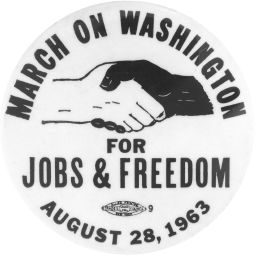
Photo courtesy Hakes Americana & Collectibles
Reverend KING stated that he had mixed emotions about President KENNEDY in that the President should be made to know that we are not satisfied with him and what he has done to the field of civil rights
Excerpt from illegal wiretap authorized by
J. Edgar Hoover, Director,
Federal Bureau of Investigation
This now-declassified report, along with the others referenced in this book, remains cataloged by the FBI under the heading
NEGRO QUESTION
A quarter of a million people, human beings who generally had spent their lives treated as something less, stood shoulder to shoulder across that vast lawn, their hearts beating as one. Hope on the line. When hope was an increasingly scarce resource.
There is no dearth of prose describing the mass of humanity that made its way to the feet of the Great Emancipator that day; no metaphor that has slipped through the cracks waiting to be discovered, dusted off, and injected into the discourse a half century on. The March on Washington has been compared to a tsunami, a shockwave, a wall, a living monument, a human mosaic, an outright miracle.
It was all of those things, and if you saw it with your own eyes, it wasnt hard to write about. With that many people in one place crying out for something so elemental, you dont have to be Robert Frost to offer some profound eloquence.
Still, I can say to those who know the event only as a steely black-and-white television image, its a shame that the colors of that daythe blue sky, the vibrant green life, the golden sun everywhereare not part of our national memory. There is something heart-wrenching about the widely shown images and film clips of the event that belies the joy of the day. But it could be worse. We could have been marching in an era before cameras and recording devices; then the specifics of the event would eventually fade out of living memory and the world would be left only with the mythology and the text. Text without context, in this case especially, would be quite a loss. One might imagine standing before an audience and reading Reverend Martin Luther King, Jr.s I Have a Dream speech verbatim, but it is a stretch to believe that any such performance would sow the seeds of change with, as Dr. King put it that day in Washington, the fierce urgency of now. The vast crowd, the great speaker, the words that shook the world it all comes as a package deal. We are truly fortunate to have a record. Yet what the television cameras and radio microphones captured that August day is but a sliver of the vibrancy of the event. When a film adaptation of a beloved novel premieres, the people who say Oh, but youve got to read the book are inevitably right. The density of the written word makes the flat motion picture a pale artifact in comparison. In a similar fashion, although watching the black-and-white news footage of Dr. Kings historic call to action is stirring to almost everyone who sees it, learning about the work that went into The March and the speechthe discussions and debates behind closed doorsoffers a unique context that magnifies the resonance of hearing those famous words I have a dream in that phenomenal, inimitable cadence.
If, taken together, the images and recordings of Martin make up that movie of the 1963 March on Washington in our collective consciousness, and if its true, as people often say, that If you loved the movie, youve got to read the book, Behind the Dream is that book. It is a story not known to the general public or disclosed to participants in The Marchor, in fact, to many of its organizers. I acquired private truths and quiet insights during the months leading up to this historic event. For the most part, Ive kept them to myself. But as this book is published, I will be entering my ninth decade on this Earth, and as I move closer to the final horizon, I realize the time has come to share what I know. The experiences cannot die with me; the full truth is simply too important to history.
For those of us who put The March together, several aspects of that day struck a chord and went on to have a profound effect on us. First was the most obviousthe size of the crowd. It was truly staggering. Estimates vary widely, depending on the agenda of who was keeping count, but those of us who were involved in planning The March put the number at a minimum of 250,000. They showed up to connect with The Movement, to draw strength from the speakers and from each other. This was perhaps not so surprising, since the underpinning of the Civil Rights Movement had always been our sense of communal strength. It is in part why the Black Church was a focal point for The Movement; it allowed individuals to see that they were not alone in their suffering, their loss of dignity, their humiliation. But congregations were measured in the hundreds of families, not hundreds of thousands. The March was an especially important milestone for African Americans because it allowed many who suffered the degradation and sometimes physical abuse of racism in relative isolation to share with a vast number of people their pain as well as their hope and optimism for a better day.
A kind of unique energy emanated from the massive crowd, and it was just that energy that made the words in Martin Luther King, Jr.s speech resonate. He had, in fact, used the phrase I have a dream in a previous speech with hardly anyone registering anything exceptional about it. It played out differently that August day. The reason is simple: The power is not in the words themselves. Nor is it in the speaker. The power was woven into the feedback loop that jumped between the words, the speaker, and his audience. It was those quarter of a million souls who made the dream the Dream. It was a perfect storm. I know, because I saw it happen. I was standing no more than fifty feet behind Martin when I saw Mahalia Jackson, his favorite gospel singer, look to him with a beaming face and shout a piece of advice. As the suggestion took root, I watched Martin push aside the text of the speech Id helped preparea text, it bears noting, that
Next page
